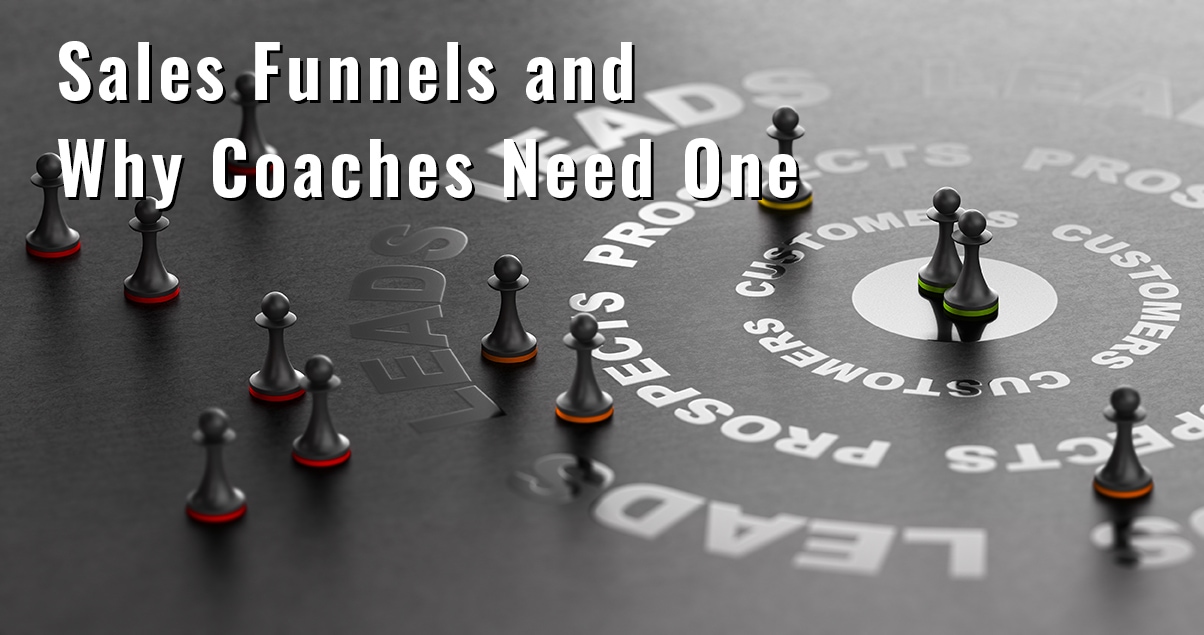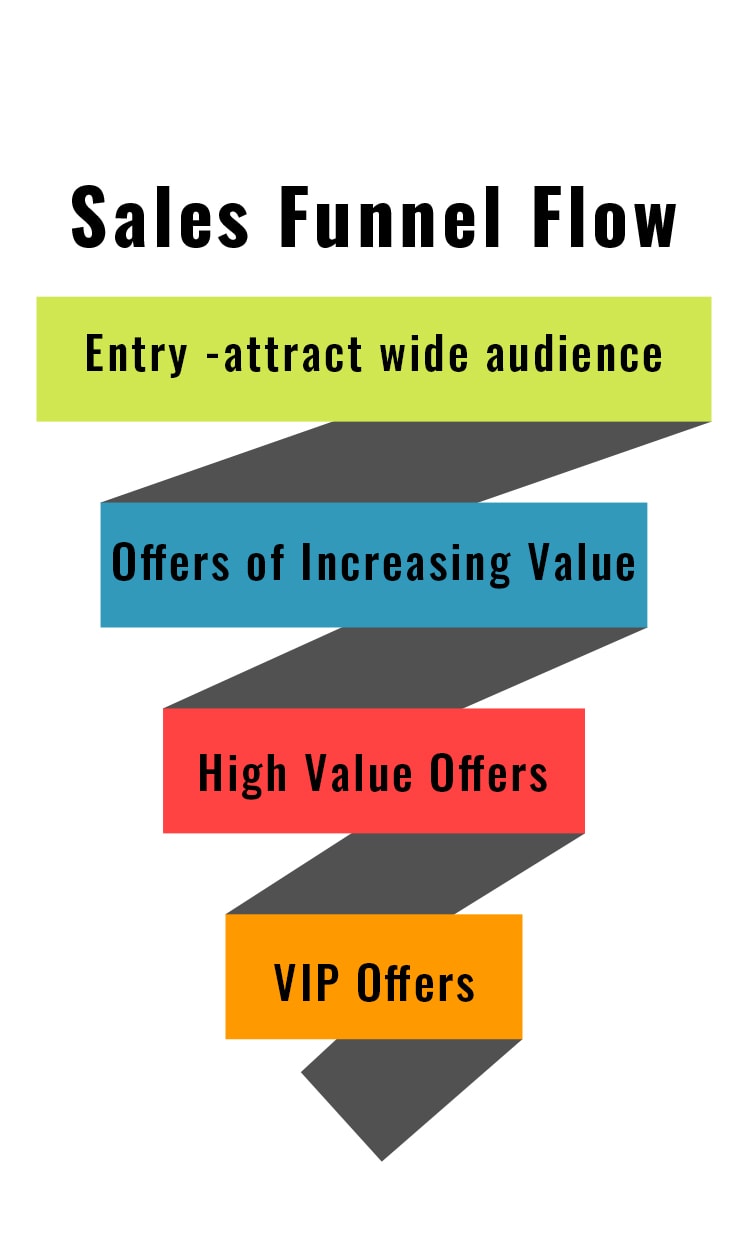
I’m often asked what a sales funnel is and why it’s so important to have one. These two questions go hand in hand, so let’s take a look at the answers to both of them.
A sales funnel is a pathway through which you guide prospects into the depths of your business. You could also look at it as a staircase, where a person joins you at a “lower level” of commitment in your business and takes steps to go with you further and further to learn more, and transform more with you as their coach and guide.
If you think about it from the perspective of overcoming a barrier to buy something, unless your prospects have unlimited funds, they probably won’t be ready to purchase your highest priced coaching service without having some experience with you first. Likewise, if you’re planning a weekend retreat in a faraway land, very few will shell out $10,000+ unless they already know you and like what you have to say.
As a coach, you’ll want to bring clients, particularly your dream clients, into your business and lead them to offers which add value to them. Crafting the right path ensures that a stream of new prospects flows continuously, providing you and your business with the right customers time after time.
That’s where a sales funnel comes in.
Anatomy of a Sales Funnel
Have a look at the picture of the funnel. It’s got the widest opening is at the top of the funnel with the smallest opening at the bottom. The idea of a sales funnel is to attract a large number of people who may be interested in your products. You offer them products (for free or paid) along the way, leading them down to the smaller opening, which is where your most expensive product is offered.
At each step, from the wide opening and downward into the funnel, you will make offers to this audience. Usually, these offers are incremental in price and value. The offers make chronological sense to the consumer and after they purchase one product, they are more likely to purchase a second due to liking your content and your style of coaching. You can have as many steps as you want to create along the way, but the key idea is that the pathway to your products is connected and clear.

The picture of the funnel also signifies that as you go deeper into the funnel (and deeper into your offerings), you’ll be appealing to less and less people. Don’t be alarmed at this idea, because if you think about the people you want to attract to your highest level offers, you want these to be your real dream clients.
This implies that at each step of the way, some people will truly want your offers and some will – and should – not want your offers. This process of selection is great for you, because you’ll end up working with clients you really click with. And it’s great for your clients, because they will want and need what you have, and they will naturally align with you and your way of working. You can’t – and don’t want to – serve everyone.
So, in designing your sales funnel, you want to give people more and more exposure to you and your offers, which helps them – and you – clarify if working together more intensely is mutually beneficial. Keeping the funnel wide at the beginning gives you the opportunity to attract a wide number of people, which means you’ll have better chances to attract the right number of your ideal customers.
What Can I Offer?
At the entry to your sales funnel, you’ll want to provide something with mass appeal so you’re attracting a large number of people. Remember, you want to attract a big audience at this stage. What you provide needs to provide real value for the person receiving it and it should showcase your coaching, so they can fairly assess if they like you enough to build a relationship. It can be a freebie, a chapter from your book, a recording of an interview, a checklist or a template.
Once people have responded to that freebie, I like to offer an appropriate low priced item. These types of products give your audience a low risk way of experiencing your coaching skills and beliefs. These low-priced items can include ebooks, workbooks, ecourses, or a membership site. I have several of these covering different areas of my expertise. And each one leads onwards to more intense, higher value offers.
Remember that the funnel is a path, a logically constructed way for your client to progress and develop or to learn more or transform more. Each product should lead naturally on to the next one, building further and creating more value for you and your client. With this pathway in mind, you’ll have a solid strategy to attract and retain customers on a continuous basis.

How Can I Get Started Creating Passive Income Products?
The key to creating lower priced products for your sales funnel is that they should be quick and easy to create. You don’t need ghostwriters or a huge team to create the products I’m talking about. The idea is to pull your expertise out of your head and get it onto paper or video. No extra research necessary…it’s all about what you know.
If you would like more details of how to get started creating your sales funnel and your first products, download my free guide on 4 Business-Building Passive Income Products. I’ll share tips on how to create them, how to price them, and how to know WHAT your audience actually wants. Grab it now by clicking this link. Get ready to create massive income!

Recent Comments